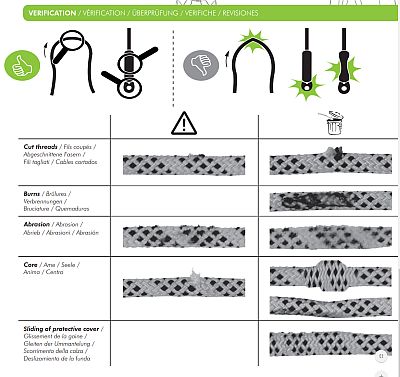
As the Rigging chat emphasises, it's not the same as Yorkshire! While much of the material will be familiar to those with extensive SRT experience in the UK, there are factors unique to expedition work, and techniques are very rarely seen at home...

We do recommend you look at Sherry Mayo's Rigging for alpine SRT . This is aimed at users in Australia, but is based on York and Oxford (OUCC) practices in the Picos de Europa (N.Spain), which is in many ways similar to Austria.
We have recently (2022) changed our rock bolt technology completely. Only set a bolt on expo if you have been specifically trained and your name appears on the list of those trained in Hang-Fix anchor technique.
At the same same as - or before - you draw up your survey notes for a new cave, you must sketch a rigging guide.
It is essential that rigging guides are drawn for any new rigging or rerigging each year so that we can add rigging guides to the online cave descriptions.
This write-up should be done by the person who did the rigging at the first available moment: usually this will be in the top-camp logbook.
See the New Rigging Guide part of the survey preparation process for where and when to do the initial and the final rigging guides for a new cave you have discovered. Instructions for the first, immediate rigging guide are in the Logbook write-up part of the survey handbook.
It's also essential for future years to record any gear left in situ, so that we can keep the Fixed Aids list up to date.
Rope should be chained only when it is washed and checked. Dirty or unchecked rope may be coiled. Rope should be washed, checked and measured at the end of each expo. See the Courant rope care notice.
Rope should be labeled at both ends with "CUCC", the year of first use and the rope length. Where the manufacturer specifies the maximum end of life date, this may also be specified, eg CUCC 2016-25. The maximum end of life date may be determined by cutting of a section of rope and finding the plastic strip that should contain the manufacturer and date of manufacture.
The rope retirement policy is under annual review. See the above links dated 2019.
In 2016, the retirement policy was:
"Ropes should be retired, when they have received a fall with a factor of greater than 0.5, when there any defects detected or are older than 5 years without a maximum end of life date."
which was revised in the 2019 retirement age of caving ropes (2019) report.

See the making a rigging guide - part of the new cave recording process.
See the Bolting - Hang Fix anchoring
See the instructions and training
- for expo bolting